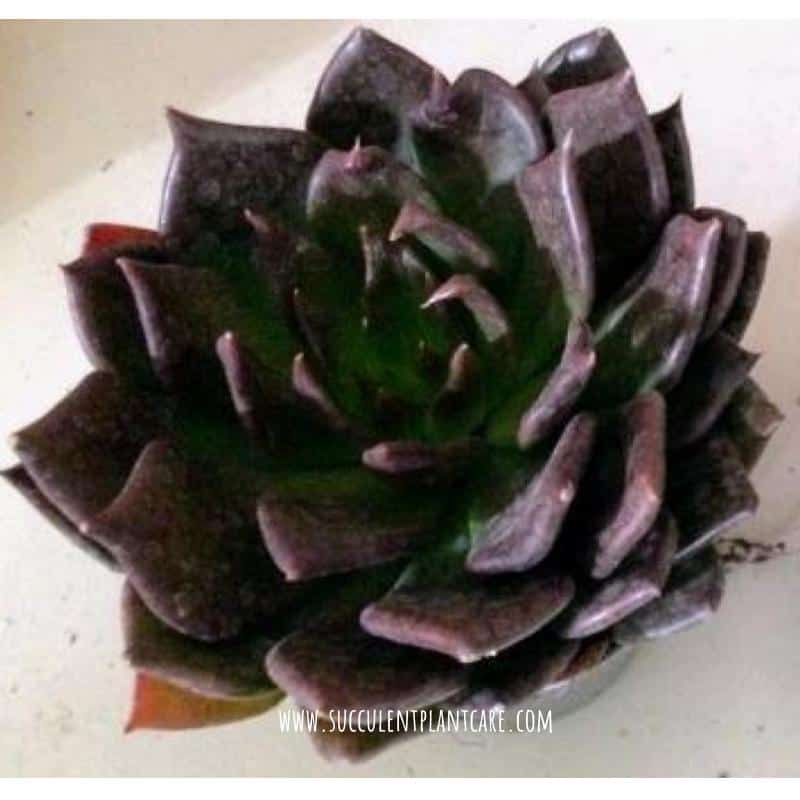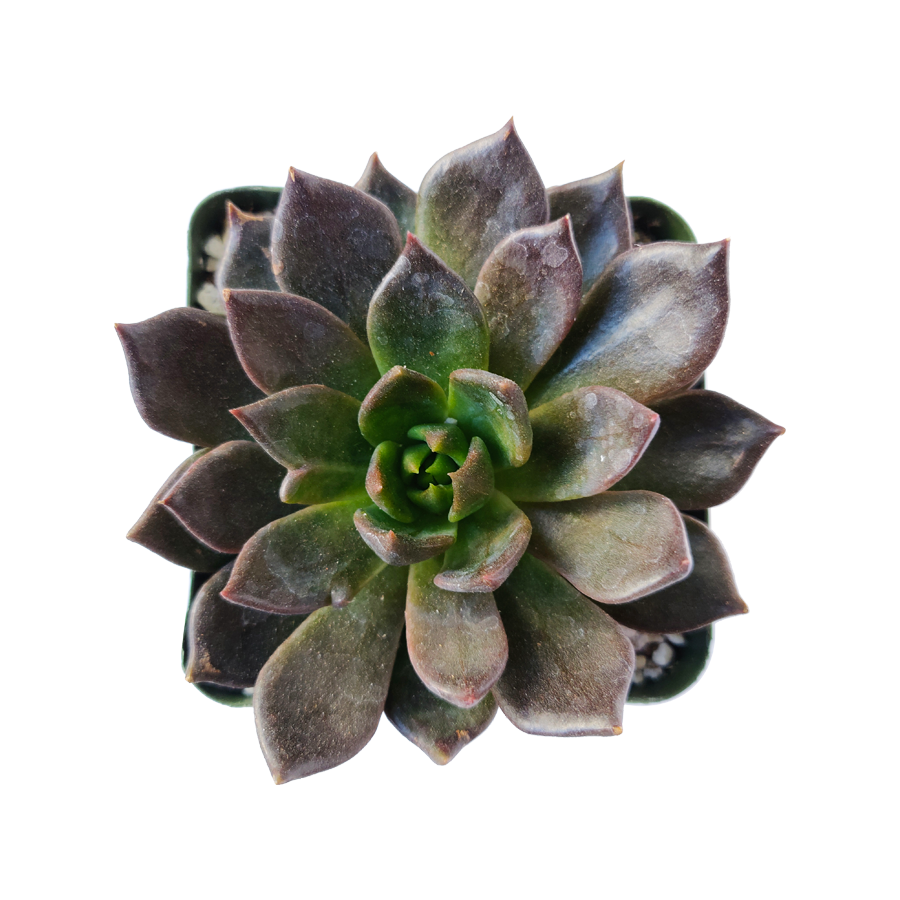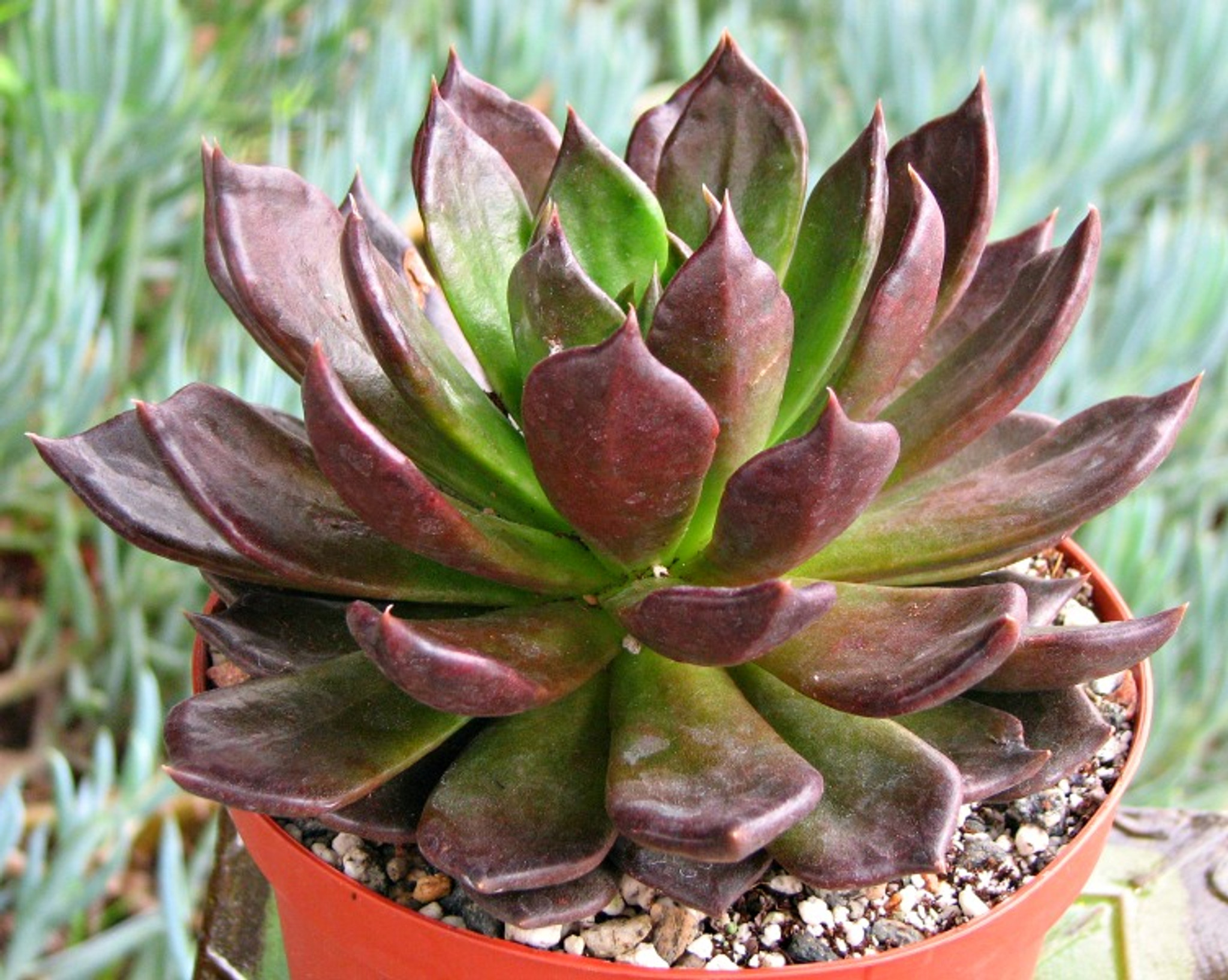
A black prince succulent that appears to be dying is frequently caused by overwatering and moist soils, which cause the leaves to become mushy and droopy. The black prince plant’s stem becomes lanky, the leaves become green, and the lower leaves begin to wither from lack of sunlight.
Continue reading to find out the cause of your black prince succulent’s (Echeveria) demise and the remedy.
Table of Contents
Over Watering (Leaves Turning Brown or Yellow and Mushy)
Overwatering is the most frequent cause of a black prince echeveria dying.
Native to Mexico, where they thrive in a hot, dry climate resembling a desert, with grity, well-draining soil and rare rainfall, are black prince succulents.
The black prince succulent may exhibit the following signs if it receives excessive watering:
- leaves that are squishy in texture and are becoming yellow and brown.
- leaves are shedding from the plant.
- sagging stems or leaves
The root rot that results from prolonged overwatering of the black prince succulent is particularly difficult for the plant to recover from.
However, if you catch the signs of overwatering and reduce the amount you’re watering before root rot occurs, the plant will frequently recover.
Since black prince succulents are acclimated to drought, overwatering rather than underwatering is more frequently an issue when they are grown.
Overwatering is likely the reason why your black prince succulents are dying back if you water them more frequently than once per week.
The remedies…
When you notice the signs of overwatering, the most crucial action is to reduce the watering and allow the soil dry out.
It’s critical to mimic the watering and soil moisture of your black prince succulent’s natural environment in order to grow it and keep it from dying. To achieve this, give your black prince succulent a vigorous soak followed by a dry spell, letting the potting soil to dry out.
Give the dirt a good thorough soak before measuring how long it takes for the soil to completely dry out at the base of the pot to determine how frequently you should water black prince succulents in your home.
The best way to do this is to use the drainage hole in the base to feel the soil at the bottom of the pot.
If the soil still feels wet or damp, wait a few days before watering. If the soil feels dry, water at this time.
Black prince succulents often need to be watered once every two to three weeks, but it’s crucial to determine the best watering frequency for your home’s conditions by checking the moisture of the soil.
If you see that your black prince succulent’s leaves are beginning to develop a mushy feel, you should remove those specific leaves from the plant to stop the rot from spreading. Often, reducing watering and letting the soil dry out entirely helps revitalize the plant.
If the plant continues to deteriorate despite allowing the soil to dry out completely, this is frequently caused by the soil holding onto moisture around the roots for an excessively long period of time or a sign of root rot.
Because the several fungal diseases that cause root rot are challenging to treat, the only reliable technique to save a succulent with root rot is to take cuttings of leaves for multiplication.
Watch this instructive YouTube video to learn how to grow succulents from leaves.
Soil Retains Too Much Moisture Around the Roots

The black prince succulent typically gets the same symptoms of overwatering with wilting, mushy leaves in conventional potting soil because it holds too much moisture around the roots to tolerate.
Root rot is also likely to be caused by soil that drains slowly or absorbs too much moisture.
The answer is…
In order to reproduce the well-draining, soil qualities of its natural environment, a black prince succulent should be planted in specialist succulent and cactus soil (available from garden centers and Amazon).
Replace the soil in your black prince succulent if it is in regular potting soil that doesn’t drain well and dries out rapidly after being watered to save it from dying.
Take the black prince plant out of the pot, then remove the potting soil delicately to protect the roots.
To get rid of any fugal disease pathogens that can grow in moist soil, disinfect the container it was planted in after washing.
Replant the black prince echeveria in the newly created succulent soil, which closely resembles the soil profile found in the succulent’s natural habitat.
Use the best watering techniques, letting the soil dry out in between waterings, and remove any leaves that are very mushy or squishy to stop rot from spreading.
Replanting the black prince succulent in well-draining succulent soil can help it recover because the roots will be able to dry out properly and remain strong.
Not Enough Sunlight
Succulents known as “black prince” are more frequently seen in open spaces in hot, dry, and rocky regions of Mexico.
The stems of the black prince succulent can become lanky as they expand in search of more light, losing their original black hue and turning green.
Too much shade on a black prince can cause it to focus its energy on developing the younger leaves in the center of the rosette, turning the older, lower leaves brown, dry, and crispy, and frequently leading them to fall off the plant.
The answer is…
To preserve more compacted stems and the darker hues of the leaves, black prince succulents should be planted (or their pot placed) in an area with at least four hours of sunlight.
How long your black prince succulent has been in the shade will determine how simple it is to save it.
You should gradually expose the black prince succulent to more light each day if you want to move it from a shaded spot to full sun.
The succulent’s leaves may change and turn brown, and they frequently don’t recover, if it moves from a shaded region to harsh full sun.
The plant should be moved for a little bit longer each day to give the leaves time to adjust to the new light levels and prevent sunburn.
If the stem has been weakened, the rosettes may not always return to normal if the stems have become very leggy and are drooping.
In such scenario, you can remove the rosette and put it in a different container, where it should immediately take root and grow into a plant.
For more information about leggy succulents and how to resuscitate them, view this informative YouTube video:
Cold Damage

According on the degree of the cold, the succulent’s leaves may become mushy in texture and turn brown or black, giving them a dying appearance akin to overwatering.
Though extremely cold weather can cause the plant to die back, in most situations the new sensitive leaves have a tendency to become soft and mushy first.
The answer is…
Make careful to constantly place the black prince plant somewhere between 55°F and 80°F (13°C and 27°C) and to avoid placing any of the leaves near a window or in an air current that is cold.
If the leaves are soft, give the mushy, cold-damaged area of the plant several days, if not weeks, to dry out slightly before pressing a callus on it.
Cut the leaf back to below the injured area once the leaf’s soft section has dried up since cold-damaged specific areas frequently do not heal.
To avoid further issues, wait until the callus on the leaf cut has fully healed before watering the succulent again.
The black prince succulent can gradually sprout new leaves and begin to regain its natural appearance after being damaged by the cold, but it will take some time.
Key Takeaways:
- Typically, overwatering or moist soils that cause the leaves to become brittle and turn brown or yellow are the reason of a black prince succulent that is in danger of dying. Black prince succulents get leggy, their leaves become green, and their bottom leaves begin to wither from lack of sunlight.
- Black prince plants need the potting soil to dry out between waterings because they are drought-tolerant. Root rot results from saturated soil.
- Black prince plants thrive in full sun, needing at least 4 hours of direct sunlight daily to maintain good health. The lower leaves die back and the leaves become green when there is too much shadow.
- Because they are not cold-tolerant, black prince plants might become mushy or wither away in colder climates.
FAQ
What kind of plant is black prince?
perennial succulent
Is black Prince an indoor plant?
It is possible to cultivate echeveria “Black Prince” both inside and outside. The best opportunity for their survival, whether indoors or out, will be provided by using the suitable potting mix (one that drains well) and adequate illumination. Never forget to modify watering requirements based on how much light the plant receives.
How much sun does black Prince succulent need?
6 hours
